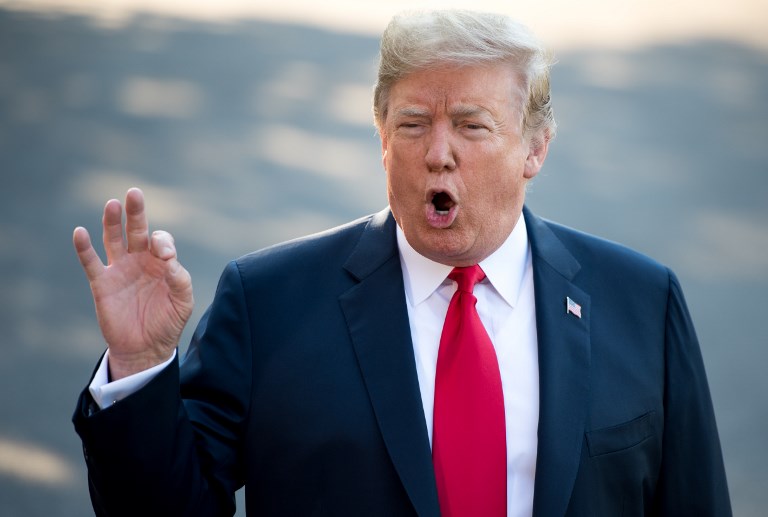
by Heather Scott
Agence France-Presse
WASHINGTON, United States (AFP) — The United States late Tuesday announced it was starting the process to slap 10 percent tariffs on another $200 billion in Chinese export goods as soon as September, escalating the trade war between the world’s two largest economies.
President Donald Trump vowed to hit back on a growing list of products after China retaliated in kind for the first round of 25 percent tariffs on $34 billion worth of imports that Washington imposed last week.
If he goes ahead it would mean thousands of products from fish to chemicals, metals and tires would face new taxes.
US Trade Representative Robert Lighthizer said Washington did a thorough investigation to justify imposing tariffs on $50 billion worth of imports to compensate for the harm to the US economy caused by China’s unfair trading practices, including theft or forced transfer of American technology.
But China has rebuffed US complaints and denied any harm was done to US companies, and instead retaliated “without any international legal basis or justification,” Lighthizer said.
“As a result of China’s retaliation and failure to change its practices, the president has ordered USTR to begin the process of imposing tariffs of 10 percent on an additional $200 billion of Chinese imports,” he said in a statement.
USTR will hold hearings in late August on the list of targeted products, and an administration official said it would take about two months to finalize, at which point Trump would decide whether to go ahead with the tariffs.
The goal is to bring the total amount of Chinese imports up to 40 percent of the total imported from the Asian power, since the US products hit by Beijing’s retaliation represent that share of exports, an official told reporters in a conference call.
This dispute comes alongside the US confrontation with other allies and major trading partners including Canada, Mexico and the European Union, for the steep tariffs imposed on steel and aluminum. Those nations also have retaliated.
Expanding trade war
The trade confrontation between Washington and Beijing has been escalating for months, despite Trump’s repeated statements that he has a good relationship with China’s President Xi Jinping.
China accused the US of starting “the largest trade war in economic history,” after the first round of tariffs took effect last week.
But Trump has said continuously that China has taken advantage of the US economy, and he has vowed to hit nearly all the country’s products with tariffs, as much as $450 billion.
The US trade deficit in goods with China ballooned to a record $375.2 billion last year, stoking his anger over trade policies.
For now, the USTR continues to work on the process of finalizing an additional $16 billion in goods to face 25 percent tariffs to bring the total up to $50 billion. Beijing has vowed to retaliate dollar-for-dollar.
The new list of goods to face 10 percent punitive duties includes frozen meats, live and fresh fish and seafood, butter, onions, garlic and other vegetables, fruits, nuts, metals, and a massive list of chemicals, as well as tires, leather, fabrics, wood and papers.
The officials said they tried to target goods that would reduce the harm to US consumers.
They also said they remain open to working with China to try to resolve the dispute, but the response from Beijing so far has been unsatisfactory.
“For over a year, the Trump Administration has patiently urged China to stop its unfair practices, open its market, and engage in true market competition,” Lighthizer said. “Unfortunately, China has not changed its behavior.”
But he added that “the United States is willing to engage in efforts that could lead to a resolution of our concerns.”







